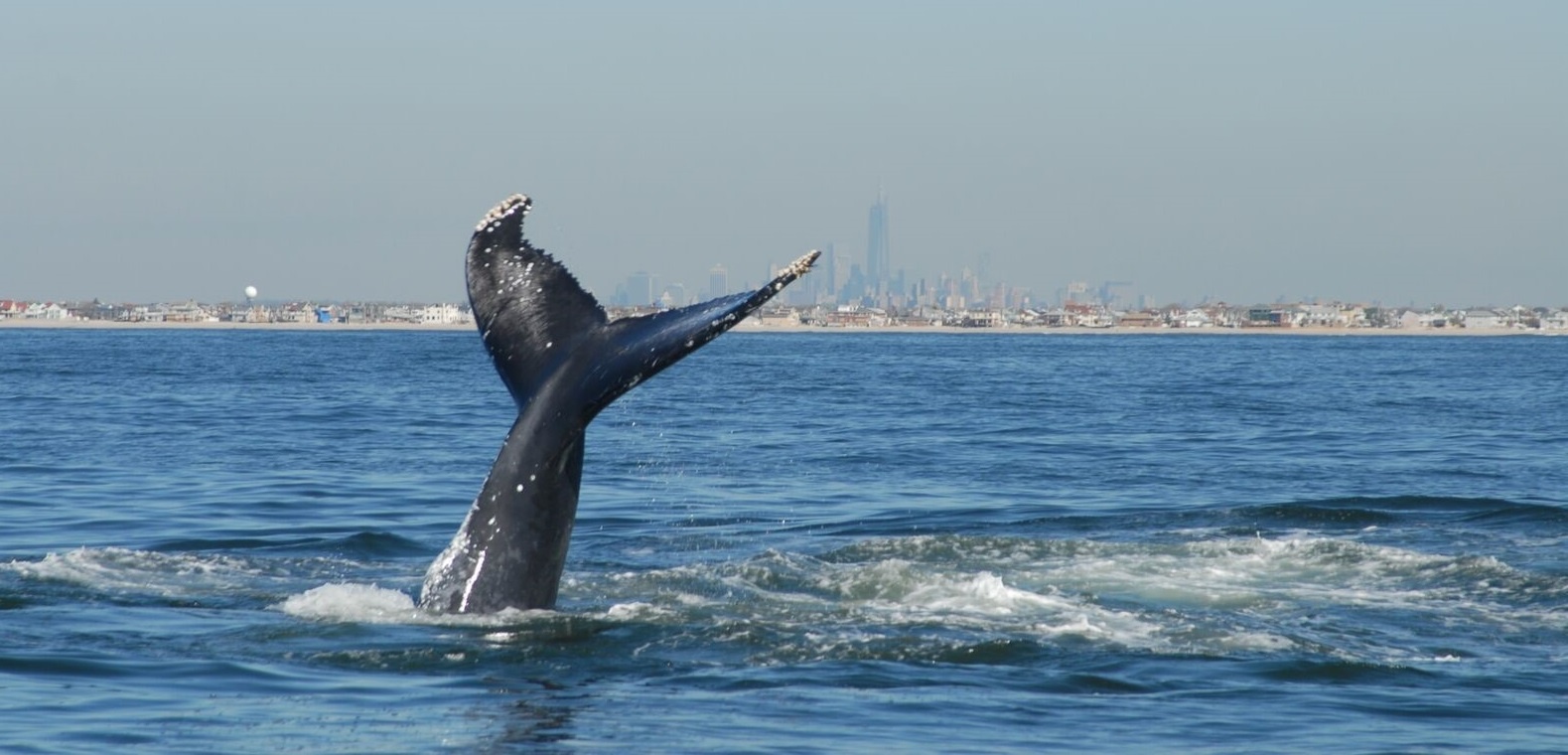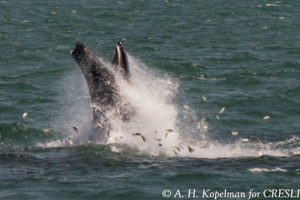We have much more to do and your continued support is needed now more than ever.
Atlantic Menhaden: A Feast for Whales

Rockaway, Queens, is a small peninsula wholly contained within New York City. It’s hardly a place you would expect to be a hotbed of wildlife activity. Yet, due to a key decision put into place by fisheries managers in 2012, this area, just twelve miles as the crow flies from Manhattan, is seeing a resurgence in humpback whales.
Throughout the summer, numerous news outlets pointed out that thanks to this resurgence, you can now go on whale watching tours launched from one of the largest cities in the world. As large, beautiful and mysterious creatures, it is easy to see why humpback whales attract our attention, but their increased presence in the New York metro area is due in large part to the recovery of one of their favorite food sources – Atlantic menhaden.
Why whales are back

Menhaden attract the attention of all kinds of hungry wildlife including striped bass, bluefish, eagles, osprey, dolphins, and of course, whales. From Florida to Maine, menhaden once blanketed our coasts, with historical reports suggesting fishermen could walk horses dragging nets along Long Island beaches and catch upwards of 150,000 fish. They are an oily, and therefore energy-rich fish, which makes them sought after not just by other species, but unfortunately by commercial fishermen as well. One company in Virginia, Omega Protein, harvests the vast majority of menhaden in the Atlantic, breaking them down to be used in everything from dietary supplements to dog food and fertilizer.
In 2012, the Atlantic States Marine Fisheries Commission (ASMFC), tasked with managing fish populations along the coast, acknowledged that menhaden were greatly depleted due to commercial fishing and put into place coast-wide catch limits for the first time ever. Early studies suggested this catch limit meant leaving 300 million more menhaden in the water – a real feast for humpback whales.
Gains are threatened
Omega Protein and its allies have continued to chip away at the catch limit, increasing it twice since 2012. This summer, however, the ASMFC will be considering a change to the way they manage menhaden. The preferred option would be to set catch limits more conservatively by looking at how many fish are needed to provide for the dietary needs of whales and other predators.
It is truly inspiring that a child living in the New York City limits can wake up on a June morning and see a humpback feeding only hundreds of yards from shore. This incredible story of how people and wildlife can coexist when we manage species properly is a true conservation success, and it demonstrates just how even the smallest species like menhaden matter to the biggest predators like whales.
Menhaden are a small fish with a huge role – and that role extends far beyond New York City. Whales and other species prey on menhaden wherever they can find them, and stocking up on this energy rich food helps all along their migration routes. Thanks to the ASMFC whales and other menhaden predators are recovering. Those other predators include sharks, reflected in another viral video from this summer:
[youtube]https://www.youtube.com/watch?v=fukfYbmgEcs&t=34s[/youtube]
The Atlantic States Marine Fisheries Commission is voting in November on a more responsible management plan for menhaden that would keep more fish in the ocean to benefit the entire ecosystem. We need your help to protect menhaden and to protect whales and other species that prey on menhaden – please sign our petition today. Tell the ASMFC to manage menhaden conservatively by implementing Option E and adopting ecological management NOW.
![]() Sign the petition to add your name in strong support for protecting menhaden and humpback whales that depend on them!
Sign the petition to add your name in strong support for protecting menhaden and humpback whales that depend on them!





















